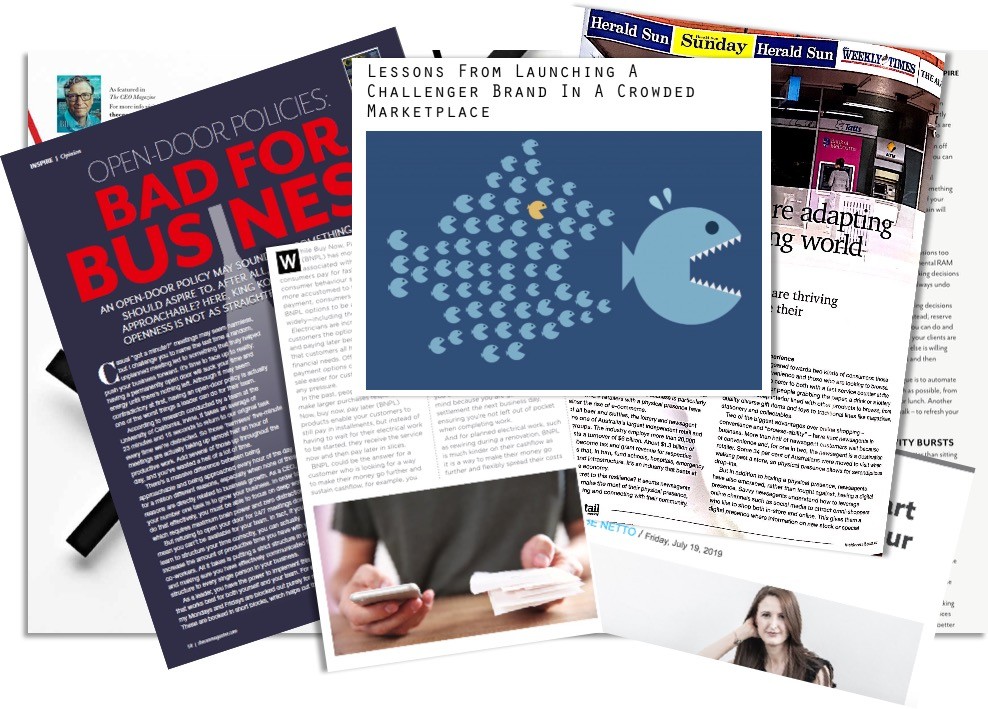If you want to grow your business, there are several marketing options on hand for both short-term and long-term growth, including public relations (PR). In this guide, we will look at PR to grow your business, give you some of the secrets from a PR expert and the steps to earn some publicity for you and your business.
WHY should you use PR to grow your business?
PR to grow your business is one of the best ways to promote your business. Because it goes one step further than advertising by showing your audience the best parts of your business instead of just telling them about it.
It says to your target market: a journalist, publication or influencer chose to support or seek out the advice of this business. Therefore, they must be top of their field.
In short, it drives trust.

WHAT do small businesses need to get started?
An understanding of your value. Businesses should think about what value they can add, especially if that value is unique to them. Ask yourself: how my particular skills, produce or service, and experience help people?
A clear plan. Assign a chunk of focused time to create a PR plan. Start every PR campaign with a period of preparation that includes creating ideas, developing strategies, lists of media angles, and target publications.
A newsworthy pitch. Once you know your value, you’ll need a newsworthy pitch. Make sure your pitch is relevant to the publication, tugs on the right heartstrings, and is backed by credibility and authority. Most importantly, the pitch should have some kind of newsworthy hook that ties into an existing news story, zeitgeist, or cultural shift.
Supporting material. Anticipate what the journalist might need to tell your story, and make sure you give it to them upfront, to make their life easier and save time. Think high-resolution images, b-roll footage, case studies, company backgrounders, and the names and bios of the people available for interview.
The confidence to get started. Just start – you’ll get the hang of it. Don’t wait for big ideas, instead look for consistency in small things done well. The quest for perfection will kill any hopes of PR success dead in their tracks.

HOW do businesses achieve killer media coverage?
Give journalists a great story
If a journalist can tell a story without your help, they will. So if you’re pitch is so generic that any old journalist could write it, they’ll either simply do it themselves without including you in the piece, or write it off completely.
Present them with something that they haven’t thought of before, or that adds more colour to a story. If you happened to come across this story in real life, would you stop what you’re doing and pay attention? If not, then you might want to rethink your idea.
Make sure you’ve got the right pitch for the right person
Are you offering an advice article when they only do interviews? Are you offering an interview when the bulk of their publication is made up of advice articles? Are you writing something targeted at schools, when this publication is targeted at parents? Are you approaching an editor that only considers stories that come with financial information, video footage, or case studies? Are you pitching a breakfast radio producer an interview with someone who is not available until 11am?
There are so many media-specific standards to consider that it always pays to do your research thoroughly. Suppose you pitch something that’s not relevant. In that case, your idea will likely be ignored, and you risk permanently damaging your relationship with a journalist.
Even within the same publication, different journalists will have different needs. Find out what area each journalist writes about (known in the trade as their ‘beat’). Make sure your pitch is tailored very specifically to their requirements.
Become a credible, reliable source
News outlets need reliable, credible experts that they can call upon at the drop of a hat. Suppose you’re not known to the journalist when you first approach them. In that case, it might take some convincing to persuade them that you’re a credible source of information. It’s your job to show them that you’re trustworthy and that you don’t have an ulterior motive.
The best way to make this happen is to ensure you have something original and unique to say. Suppose you can be more interesting and more engaging than your competitors. In that case, a journalist is far more likely to take the risk.
Maximise your coverage
Once the coverage is achieved, it’s essential to maximise the coverage as much as possible. The first few days after a piece has gone live is the most critical window of opportunity for sharing on social media, but don’t stop there. Even if your coverage is months or even years old, there are still lots of chances to post it. Keep an eye out for new news stories that relate to your own, and use it as an opportunity to add to the conversation. Jump on the ‘flashback’ bandwagon, especially if you’ve got a piece of coverage which is about to celebrate its first birthday.
TOP TIPS
Always avoid clickbait or going in for a hard sell. Be generous and give value, because that is who people want to do business with.
Journalists are incredibly time-poor, so it’s critical to time your pitch perfectly. If you send an email on a Friday afternoon at 4 pm, there’s little hope that your story will ever see the light of day.
Make your pitch as interesting as possible. Present the journalist with something that they haven’t thought of before, or that adds more colour to an existing story.
Make sure your pitch is tailored to their magazine, program, site, newspaper or section – and to the individual journalist’s particular focus or interest.
For more great advice on how to grow your business, visit Small Business Answers

